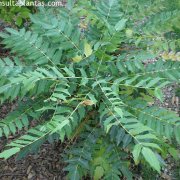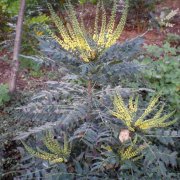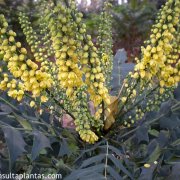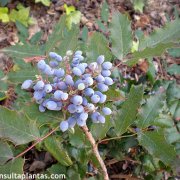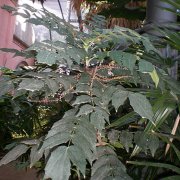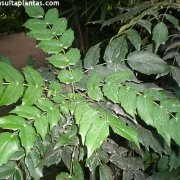Care of the shrub Mahonia aquifolium or Oregon grape |
|
The genus Mahonia, family Berberidaceae, includes 70 species of shrubs native to Asia and North America. Some species are: Mahonia aquifolium, Mahonia japonica, Mahonia repens, Mahonia bealei, Mahonia fremontii. Common names: Oregon grape, Oregon Grape Holly, Holly-leaved berberry. Scientific synonym: Berberis aquifolium. This species is native to the west coast of the USA. They are low-branched and very slow-growing evergreen shrubs that reach 1.5 meters (4.9 feet) in height. They have alternate leaves with dark green spiny margins that turn purple or bronze in winter. The yellow flowers appear in long, erect spikes at the top of the plant. They bloom in spring. They produce violet or bluish-black fruits in the shape of a berry. These easy-to-grow plants are used to form hedges, bushes, rockeries and terraces in large pots for balconies, patios and terraces. Mahonia aquifolium grows in full sun exposures (if the summer is not very hot) and semi-shade (in Mediterranean climate). It resists frosts down to -15 ºC (5 ºF). The soil must be very well drained (add coarse sand) and contain abundant organic matter. Planting is done in autumn or spring. Water frequently in summer (every 2 days) and moderately the rest of the year. Oregon Grape Holly does not usually need pruning. Fertilize in autumn with organic matter and mineral fertilizer monthly during spring and summer. Berberis aquifolium is a plant resistant to pests and diseases but sensitive to excess watering. Oregon grape is propagated by cuttings in summer, from seeds sown in spring and by layering also in spring. |
Images of the shrub Mahonia aquifolium or Oregon grape |
Find plants
Mahonia aquifolium or Oregon grape | Care and Growing
© 2025 FavThemes
